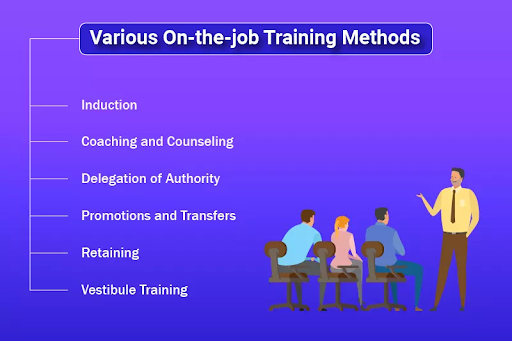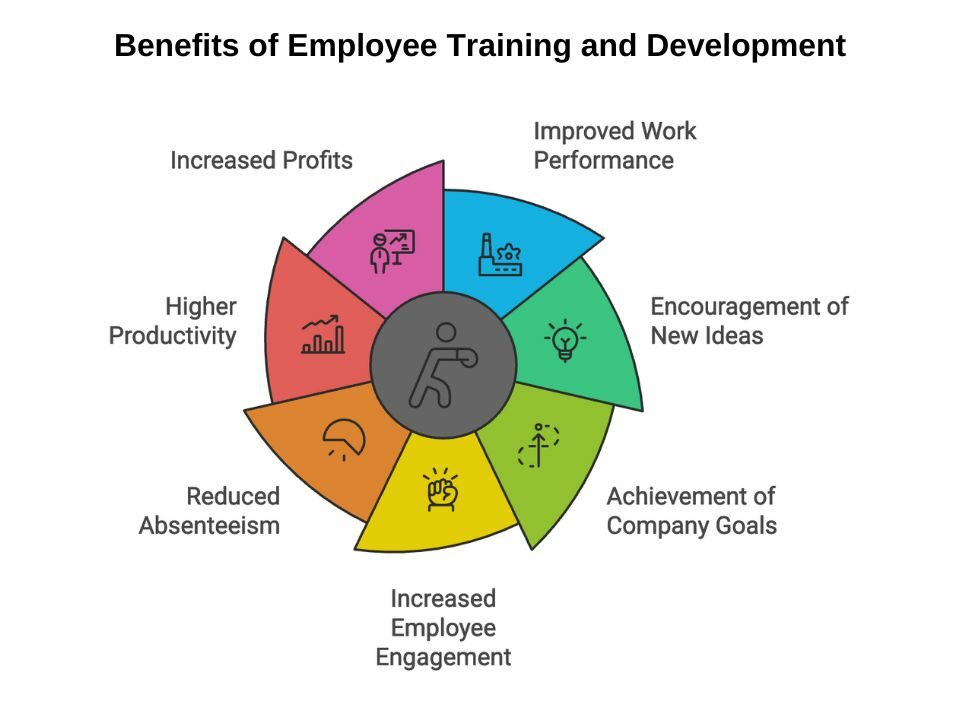What is On-the-job training: Methods, Benefits, Challenges, and More
Table of Contents

Imagine this: it’s your first day at work. You’ve cleared the interviews, signed the offer letter, and are finally sitting at your new desk. The human resources gave you a quick office tour, and now someone senior says, “Alright, let me show you how we do things here.” Within a few hours, you’re not just reading about your role, you’re actually doing it, guided by your team.
That, in essence, is on-the-job training (OJT).
But here’s the thing, OJT isn’t just about “shadowing” or “copying what others do.” It has layers, structured methods, clear benefits, and, yes, its own set of challenges. And that’s what we’re going to unpack in this blog.
By the end, you’ll not only understand the meaning of OJT, but also how it can shape careers, businesses, and maybe even your own growth.
What is On-the-Job Training?
At its core, on-the-job training meaning is simple: it’s a process where you learn by doing. Employees get trained while performing their actual work responsibilities, often under the guidance of a manager, mentor, or experienced colleague.
Think of it as the opposite of reading a manual. Instead of learning in theory first, you dive straight into real tasks, with someone ensuring you don’t sink.
In fact, the OJT meaning has evolved with industries. Earlier, it was seen mainly in manufacturing or trade apprentices working under carpenters, electricians, or mechanics. Today, it’s everywhere: IT firms, retail, healthcare, hospitality, even startups.
Why? Because businesses have realized something crucial, which is that no matter how many degrees or certifications someone holds, real competence only comes from real practice.
On-the-Job Training Methods

*fynd.academy
Here’s where it gets interesting. Many assume OJT is just “learning on the go.” But in reality, companies use a mix of structured on-the-job training methods to ensure consistency and effectiveness. Let’s break them down.
1. Coaching and Mentoring
Picture this: you’re paired with a senior employee who guides you through tasks, answers questions, and corrects mistakes. That’s coaching. It’s one-on-one, highly interactive, and perfect for roles that demand both technical skills and soft skills.
Mentoring, on the other hand, is broader, it focuses not only on tasks but also on professional growth and career guidance.
2. Job Rotation
Ever seen fresh management trainees rotate through sales, operations, and marketing before settling into a role? That’s job rotation. The idea is to give employees a 360° view of the business, making them versatile and adaptable.
3. Job Instruction Training (JIT)
This is the step-by-step method. A trainer demonstrates the task, explains each step, lets the employee try, and then reviews performance. It’s widely used in technical roles like manufacturing, aviation, or even software coding.
4. Apprenticeships
The oldest form of OJT is apprenticeships. Here, learning is formalized, structured, and often long-term. Skilled professions (electricians, engineers, designers) still rely on apprenticeships to pass down expertise.
5. Shadowing
Ever heard the phrase “just follow me around and watch”? That’s shadowing. Employees simply observe experienced staff at work, picking up details and soft skills that no manual can capture. It’s especially useful in client-facing industries like hospitality, sales, and healthcare.
6. Internship-Based OJT
For students and fresh graduates, internships are the first real taste of OJT. They bridge the gap between academic knowledge and workplace realities, often leading to pre-placement offers if done well.
The big takeaway? There’s no one-size-fits-all method. Smart companies mix and match these depending on job type, employee background, and business goals.
Benefits of On-the-Job Training

*engagedly.com
If you’re wondering, “Why not just send employees for a workshop instead?” Here’s why on-the-job training works better in many cases:
- Practical experience from day one: No hypothetical case studies, just real work.
- Cost-effective: Companies don’t spend heavily on external trainers or offsite programs.
- Faster productivity: Employees transition smoothly into contributing members.
- Boosts retention: Employees feel invested in, which often makes them stick around longer.
- Customization: Every company has its unique processes, and OJT teaches exactly that.
Essentially, it’s about learning that feels natural, timely, and directly useful. And in short, OJT is as much about shaping individuals as it is about strengthening organizations.
Challenges of On-the-Job Training (and Smart Ways to Overcome Them)
On-the-job training is practical and effective, but like anything else, it isn’t free of obstacles. The trick is to spot them early and work around them. Here are some common challenges employees face and how to deal with them.
1. Time Pressure
Juggling new learning while managing your usual tasks can feel like too much.
Fix: Break learning into bite-sized sessions, focus on the most useful skills first, and use a simple calendar to balance both.
2. Lack of Structure
Without a clear roadmap, on-the-job training can seem messy and directionless.
Fix: Ask for a checklist or milestones, and set small goals to track progress. Regular catch-ups with your mentor also help keep things on course.
3. Inexperienced Trainers
Not everyone who knows the job can teach it well.
Fix: Request demonstrations, seek guidance from teammates if needed, and rely on internal resources or quick video tutorials for clarity.
4. Fear of Mistakes
Learning while performing real tasks can be intimidating, no one likes messing up in front of colleagues.
Fix: Start with smaller, low-risk tasks, invite quick reviews from your trainer, and keep a simple “notes & fixes” log to learn from errors.
5. Slow Feedback
Training without timely feedback often leaves you second-guessing yourself.
Fix: Proactively ask for feedback, use shared task trackers, and lean on peers for a fresh perspective if managers are busy.
These challenges are common, but with a bit of planning and open communication, on-the-job training becomes smoother and far more rewarding.
On-the-Job Training vs Off-the-Job Training
So which one’s better? Truth is, it depends. For skills that need real-time practice, OJT wins. For theoretical frameworks, compliance, or leadership principles, off-the-job work is better. Smart companies blend both.
| On-the-Job Training (OJT) | Off-the-Job Training |
| Hands-on, real environment | Classroom, labs, or online |
| Cost-effective, practical | More theoretical & broad |
| Immediate productivity impact | Broader conceptual clarity |
| Trainer = colleague/manager | Trainer = external expert |
How Jaro Education Can Help
Here’s a thought: while on-the-job training sharpens your skills in the workplace, what about the bigger picture? How do you ensure your knowledge stays updated, competitive, and future-ready?
That’s where Jaro Education comes in.
At Jaro, you will find programs that balance academic depth with practical relevance in partnership with leading universities. Be it online degrees, certifications, or executive education, you won’t just get theory but also real-world applications through case studies, projects, and industry exposure.
For students, this means a smoother transition from campus to corporate life. For professionals, it means continuous upskilling that complements OJT, so you don’t just know how to do your current job, but also prepare for leadership roles and future opportunities.
Think of it as the missing puzzle piece: on-the-job training gives you practice, Jaro gives you perspective. Together, they shape complete professionals.
Conclusion
We’ve come full circle, from understanding the on-the-job training meaning and exploring its methods, to weighing its benefits and challenges. If there’s one thing to take away, it’s this: learning at work is not optional anymore, it’s essential.
The workplace is your greatest classroom, and OJT is your teacher. But like any good education, it becomes truly powerful when combined with structured learning.
So, level up your on-the-job learning with Jaro Education’s future-ready programs.
Frequently Asked Questions
What is on-the-job training?
It’s a method where employees learn skills directly at the workplace by performing real tasks under supervision.
Can on-the-job training be done remotely or virtually?
Yes, companies now use video calls, digital platforms, and screen-sharing to deliver OJT online.
How long does on-the-job training usually last?
The duration varies, some roles need a week, others may extend to a few months based on complexity.
Is on-the-job training paid?
Most employers treat OJT as part of the job, so employees continue to get their regular pay while learning.
Does on-the-job training improve career growth?
Absolutely, OJT helps you pick up real-world skills faster, making promotions and new opportunities more accessible.

















